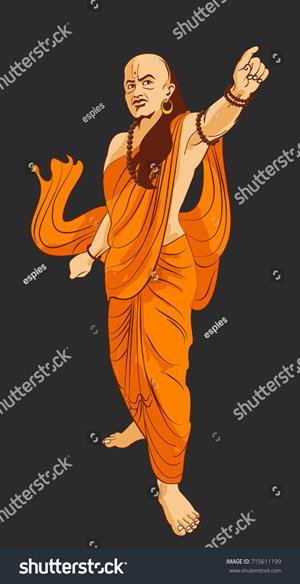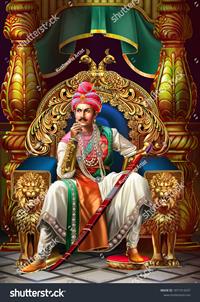PDF chapter test TRY NOW
In ancient India, the Mauryan empire was centered on Pataliputra (later Patna), near the confluence of the Son and Ganges (Ganga) rivers. It was the first empire to span much of the Indian subcontinent, lasting from around \(321\) to \(185\) BCE.
He was the ambassador of the Greek ruler, Seleucus, in the court of Chandra Gupta. He stayed in India for \(14\) years. His book Indica is one of the main sources for the study of Mauryan Empire.
With a standing army and civil service, the Mauryan empire was an efficient and well-organized autocracy. The Artha-shastra ("The Science of Material Gain"), a work of political economy akin in tone and scope to Niccol Machiavelli's The Prince, was based on that bureaucracy and its administration.
Grandeur of Pataliputra The great capital city in the Mauryan Empire, which had \(64\) gates to the city with \(570\) watch towers.
The Important Kings are:
Chandragupta maurya:
Chandragupta Maurya, also known as Sandrakottos (or Sandrokottos) by the Greeks, was the founder of the Maurya Dynasty (\(4\)th-\(2\)nd century BCE) and is credited with founding the first (nearly) pan-Indian empire.
With the help of his instructor and later minister Chanakya or Kautilya (c. \(4\)th century BCE), he constructed a massive centralized empire, the specifics of whose functioning, society, military, and economics are clearly described in Kautilya's Arthashastra.

Chanakya - An ancient Indian polymath
India was divided into various kingdoms and republics in the 4th century BCE. The Magadha Kingdom in eastern India was the most notable of them, with monarchs beginning with King Bimbisara (\(543-492\) BCE) on a quest for empire-building.
Magadha's borders had thus been greatly expanded over time, and it now encompassed a large portion of central, eastern, and north-eastern India.
Conflict with the existing kingdoms would be necessary if Chandragupta was to succeed in his quest for supremacy. As a result, he concentrated on gaining military training and experience.
Legend has it that he met Alexander and was granted permission to serve in his army so that he could learn the Macedonian way of combat and how it could be applied to old Indian warfare tactics, in addition to his own military training.
The meeting with Alexander is mentioned by Justin and the Graeco-Roman historian Plutarch (c. \(46-120\) CE). This meeting, however, went horribly wrong, and Chandragupta was forced to flee for his life.
Bindusara:
Chandragupta, the Mauryan Empire's founder, had a son named Bindusara. Many sources, including numerous Puranas and Mahavams, attest to it. Bindusara, on the other hand, is named as King Shushunaga's son in the Dipavamsa.
Bindusara was the son of Nanda and a \(10\)th generation descendant of Bimbisara, according to the prose version of Ashokavadna. It, too, omits Chandragupta's name entirely, as does Deepavamsa. The metric version of Ashokavadna has a family that is very similar to the English version, with a few differences.
Bindusara's administration had \(500\) royal councillors, according to 'Ashokavadna.' Bindusara was likewise despatched to Ashoka to lay siege to Taxila, despite the fact that he lacked a weapon or chariot
The gods then gave soldiers and weapons to Ashoka, and when he arrived in Taxila, he was approached by the locals, who informed him that they were not against the monarch, but rather his cruel minister.
At Taxila, Ashoka was successful in rebelling and entering the city without opposition. After Bindusara's death, Ment Ashokavdana recalls two officers, Khallakat and Radhagupta, who assisted Ashoka in assuming the throne.
Ashoka:
The Mauryan Empire reached its ultimate geographical breadth and power under Chandragupta Maurya's grandson Ashoka (Aoka) (approximately \(304–233\) B.C.). His amazing transformation of the country, however, did not come through the brutal violence that dominated his early reign. Rather, it was the outcome of his acceptance of Buddhism and the principles of tolerance and nonviolence that he preached over the vast empire.

Ashoka conducted a military effort to conquer Kalinga, a coastal kingdom in east-central India, eight years after attaining power around \(270\) B.C. After his triumph, he inherited a wider kingdom than any of his forefathers. According to reports, between \(100,000\) and \(300,000\) people died during the conquest.
Lion Capital of Ashoka The Emblem of the Indian Republic has been adopted from the Lion Capital of one of Ashokas pillars located at Sarnath. The wheel from the circular base, the Ashoka Chakra is a part of the National Flag.
Edicts of Ashoka:
The first individual to interpret Ashoka's edicts was James Prinsep, a British antiquary and colonial administrator. Ashoka's inscriptions are the earliest physical evidence of Buddhism.
The script of the inscriptions
At Sanchi – Brahmi
At Kandahar – Greek and Aramaic
At North Western part – Kharosthi
At Sanchi – Brahmi
At Kandahar – Greek and Aramaic
At North Western part – Kharosthi
They were placed in public areas and along trade routes so that as many people as possible might read them. More than religious discourses, they discuss people's moral responsibilities, how to live, Ashoka's desire to be a decent and benevolent ruler, and Ashoka's efforts to achieve this goal.
There are a total of \(33\) inscriptions, which are divided into the following categories:
- Rock edicts of major importance
- Rock edicts of little importance
- Different rock edicts
- Edicts of the major pillars
- Edicts from minor pillars
